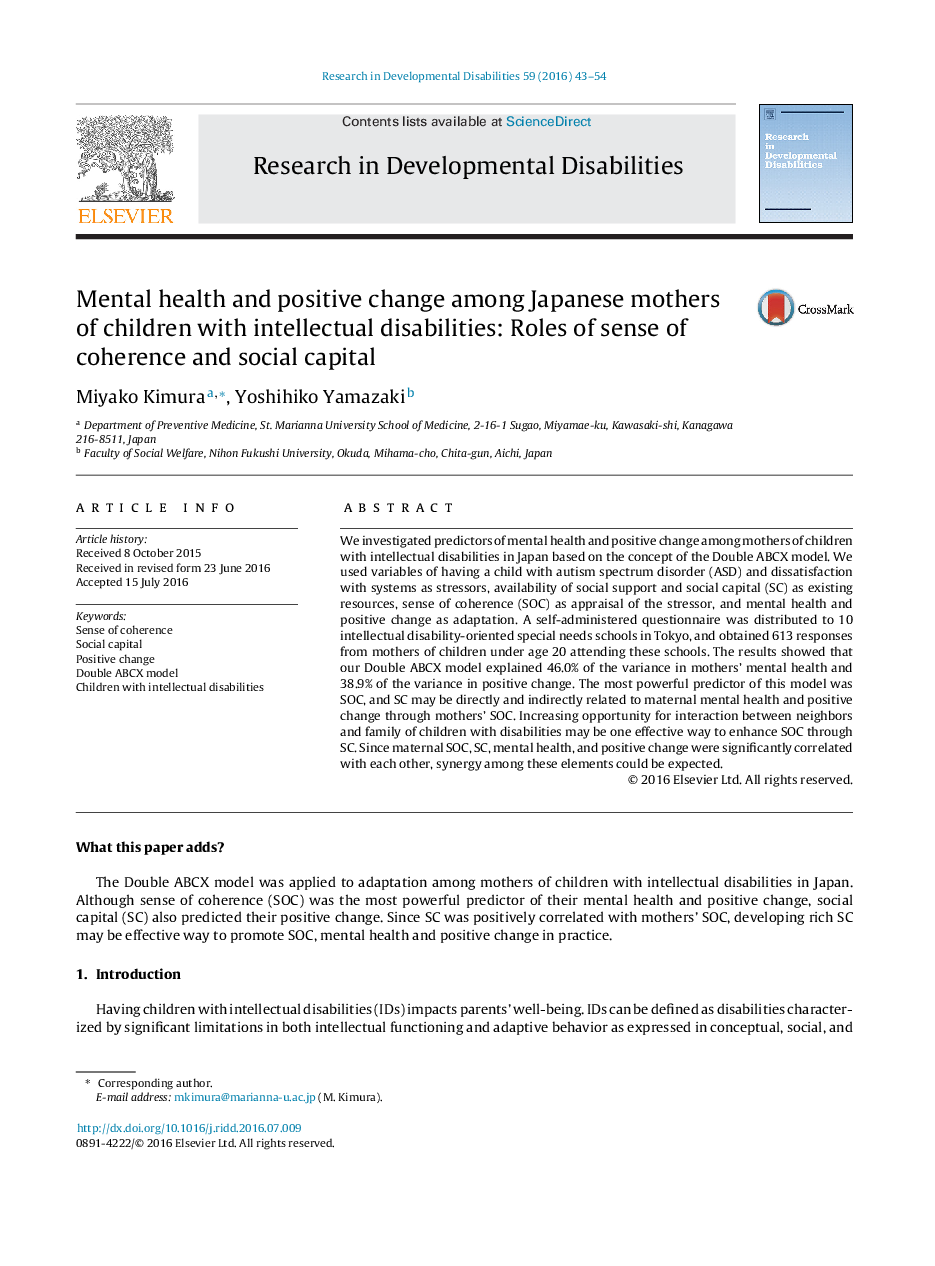| Article ID | Journal | Published Year | Pages | File Type |
|---|---|---|---|---|
| 370961 | Research in Developmental Disabilities | 2016 | 12 Pages |
•The Double ABCX model was applied to mothers of children with IDs in Japan.•SOC (appraisal of the stressor; cC factor) was the most powerful predictor of mothers’ mental health and positive change (family adaptation; xX).•SC (existing resources; bB factor) predicted mothers positive change and was correlated with their SOC.•Enhancing SC may promote mothers SOC and positive change
We investigated predictors of mental health and positive change among mothers of children with intellectual disabilities in Japan based on the concept of the Double ABCX model. We used variables of having a child with autism spectrum disorder (ASD) and dissatisfaction with systems as stressors, availability of social support and social capital (SC) as existing resources, sense of coherence (SOC) as appraisal of the stressor, and mental health and positive change as adaptation. A self-administered questionnaire was distributed to 10 intellectual disability-oriented special needs schools in Tokyo, and obtained 613 responses from mothers of children under age 20 attending these schools. The results showed that our Double ABCX model explained 46.0% of the variance in mothers’ mental health and 38.9% of the variance in positive change. The most powerful predictor of this model was SOC, and SC may be directly and indirectly related to maternal mental health and positive change through mothers’ SOC. Increasing opportunity for interaction between neighbors and family of children with disabilities may be one effective way to enhance SOC through SC. Since maternal SOC, SC, mental health, and positive change were significantly correlated with each other, synergy among these elements could be expected.
